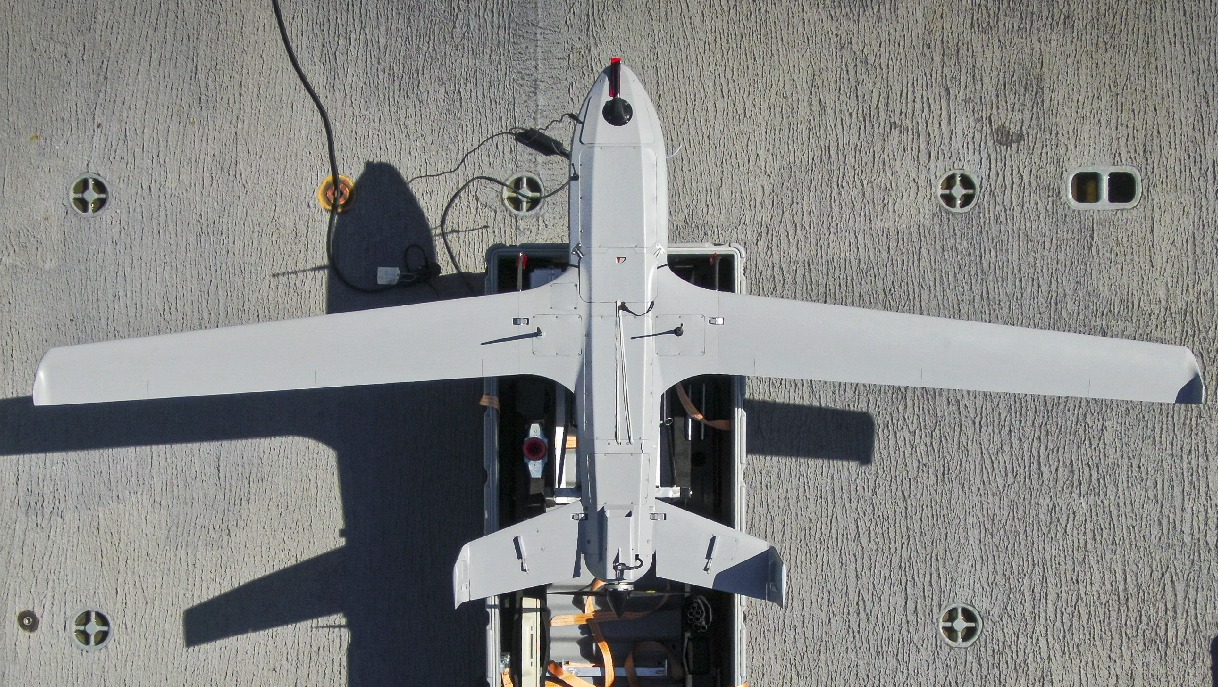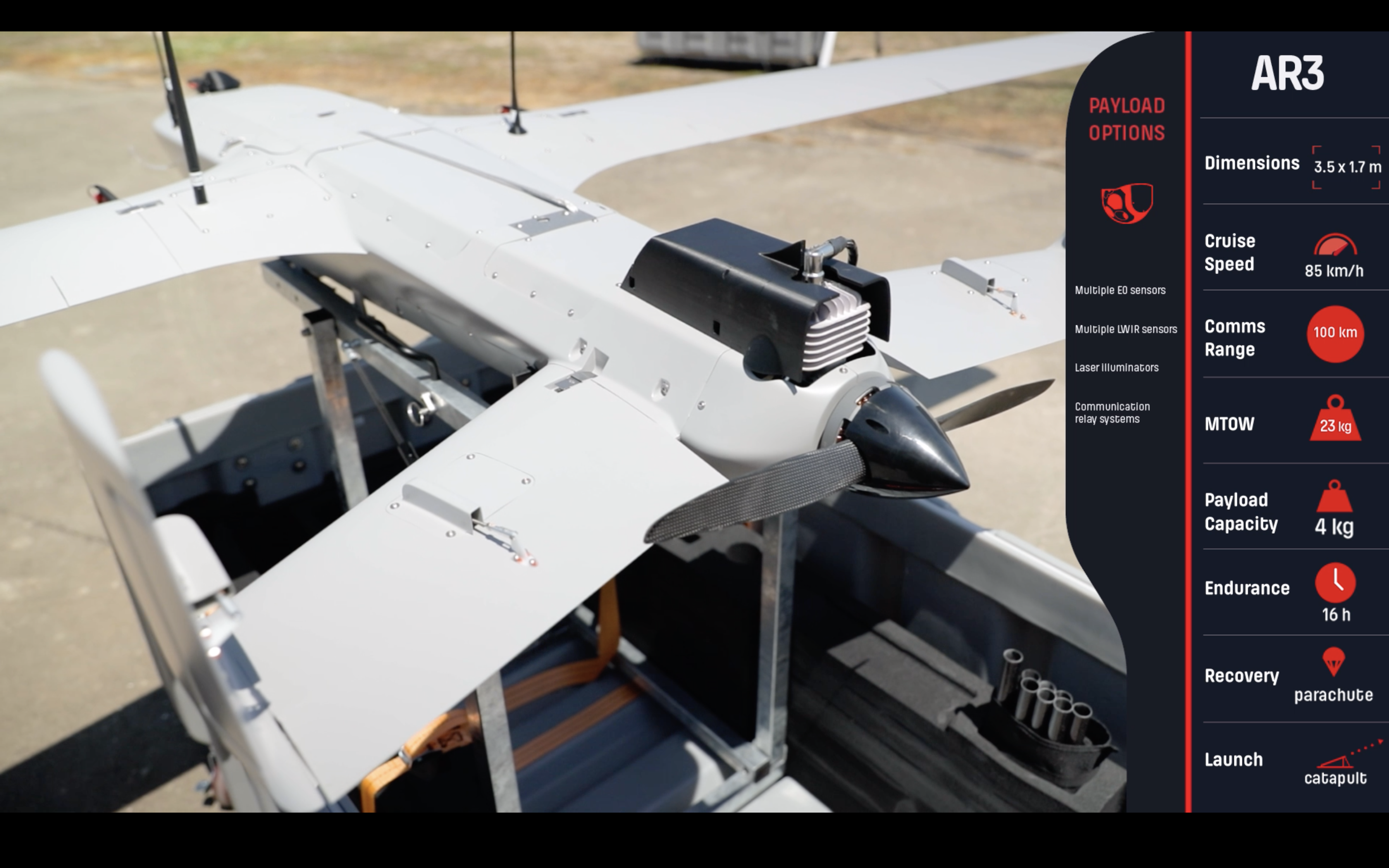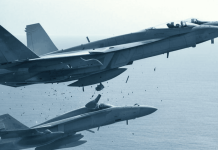A Portuguese drone reportedly knocked out an important radar from Russian territory. Experts claim the drone could be the first NATO-country weapon to cross Russia’s red lines amid mounting calls to allow Ukraine to use Western arms to hit targets in Russian territory.
On May 26, a Ukrainian drone targeted a long-range Russian radar, the Voronezh-DM OTH Early Warning Missile Launch Warning Radar, deep inside the Russian territory. The radar was deployed close to Orsk in the Orenburg region, around 1,500 kilometers from the nearest area controlled by the Ukrainian military.
The attack has since been flagged as one of the deepest drone strikes conducted by the Ukrainian forces.
Some reports and photographs going viral on social media suggest that the high-value target was struck using a British-Portuguese drone called Tekever AR3. The drone was shot down by Russia, according to these reports. EurAsian Times could not independently verify these claims.
Military analyst and an avid watcher of the Russian military, Squadron Leader Vijainder K. Thakur (retd), sounded an alarm on Platform X, stating, “Portugal Becomes 1st NATO Nation to Cross Russian Redline.”
The drone strike is especially significant as it comes at a time when calls are growing for Western countries to permit attacks on Russian territory with weaponry they have provided to the Ukrainian military.
Legislators from member nations of the military alliance, who make up the NATO Parliamentary Assembly, voted to abolish the embargo on using Western weapons against targets inside Russia.
Ukraine tried to hit Russian Voronezh-DM radar again in Armavir, Krasnodar region.
This time with Portuguese Tekever AR3 UAV. https://t.co/i0EPqHRTfg pic.twitter.com/VZn9Cur94E
— Clash Report (@clashreport) May 27, 2024
In a recent development, French President Emmanuel Macron has rallied behind the idea. Holding a map in his hand, he said if targets identified in Russia were attacking Ukraine, Ukraine could hit them with Western weapons.
France, however, would not be an escalator. If NATO sanctioned it, it would constitute a breach of Russian red lines.
There is, however, concern that this may snowball into a much wider escalation. Russian President Vladimir Putin warned NATO allies in Europe that allowing Ukraine to use Western weapons to launch an attack on Russia could spark a global conflict.
Macron explaining that Ukraine needs to be destroying all Russia's military bases within reach.
Seems that everyone but Biden now knows this.
pic.twitter.com/1X7PyUmYyO— Jay in Kyiv (@JayinKyiv) May 28, 2024
“Constant escalation can lead to serious consequences,” Putin told reporters in Tashkent. “If these serious consequences occur in Europe, how will the United States behave, bearing in mind our parity in the field of strategic weapons? It’s hard to say — do they want a global conflict?”
The strike on the Russian Voronezh-DM, the second such strike on the Russian system this month, could pose a risk of escalation. Experts believe that the Ukrainians have gone after the Voronezh-DM since it is a strategic Russian early warning radar employed to detect and track cruise missiles and intercontinental ballistic missiles. Additionally, it can detect if Russia is under a nuclear attack and engage in space tracking.
Voronezh-DM uses a lightweight steel structure, with a lightweight cover.
If there was no fire it is possible that the structure and many of the units inside are intact, reducing the required repairs and down time. pic.twitter.com/bq3teeA9yA
— krakek (@krakek1) May 25, 2024
Ten radars protect Russia with a range of about 6,000 kilometers. Some reports suggest that these radars are connected to various air defense systems, including the recently installed S-500 system. The extent of damage to these radars is not known, but targeting a system that is so vital to Russian security may be met with fierce retaliation.
However, more importantly, the attacks on Russian Voronezh-DM risk a massive escalation because they have been carried out using a NATO-origin drone. In his recent warning, Putin stated that long-range missile attacks by the Ukrainians against Russia would require military support, intelligence, and satellite assistance from the West, which would mean direct involvement from the West.
Some reports have alleged that the Portuguese drone employed by Ukraine to strike the Russian radar flew 1,800 kilometers, which is beyond Ukraine’s surveillance capabilities. However, the site of the radar could likely have been located by Kyiv’s forces using commercial satellite imagery, and not military assistance provided from the West.
Nonetheless, the image of the wreckage of Tekever AR3 has sparked a discourse among military bloggers, with pro-Ukrainian watchers rejoicing and pro-Russian bloggers calling for retaliation and warning of escalation.

The Tekever AR-3 drone
Tekever, a Portuguese drone manufacturer, announced in June last year that the UK’s International Fund for Ukraine (IFU) was financing the provision of some of its long-endurance drones to Kyiv to support land and sea operations.
In July of that same year, the British Defence Ministry shared a video on social media showcasing military equipment provided to Ukrainian troops by the IFU account. Besides other equipment, two unknown drones were seen in the video that was shown to be taking off vertically after a catapult launch.
While the British MoD declined to comment, some media reports identified the drone as the Tekever AR3 Vertical Takeoff and Landing system.
A new £60 million package of military support from the UK-administered International Fund for Ukraine will provide advanced new surveillance drones to support 🇺🇦's Armed Forces.
It will also include £20 million to provide air defence systems to help keep Ukraine's skies safe. pic.twitter.com/LyUCIdVYjZ
— Ministry of Defence 🇬🇧 (@DefenceHQ) March 22, 2024
The drone featured once again in a British MoD post on Platform X earlier this month in which it announced an allocation of an additional 60 million British pounds (approximately $75.6 million) to the IFU. Local Ukrainian media noted at the time that the post showed a drone never seen on the battlefield in Ukraine. It was identified as the Tekever AR3.
The Tekever AR3 weighs 25 kilograms and has a wingspan of three meters. It can carry a four-kilogram payload and can fly for eight to 16 hours. Some reports suggest that the drone weighs at least 50 kilograms and is classified as a Medium-Altitude Long Endurance (MALE) UAV.

Designed for optical and SAR (Synthetic-aperture radar) imaging, the Tekever AR5 has SATCOM (satellite communications) capabilities. The drone has a 20-hour endurance and can take off and land on unprepared surfaces.
The AR3 can be launched without a catapult if fitted with a vertical take-off and landing (VTOL) system with rotor wings, which shortens the flying time. If not, the drone can descend using a parachute or land on its belly. These drones feature cutting-edge technology.
The drone can protect borders, conduct marine surveillance, transmit messages, and correct artillery fire, in addition to doing broad-area monitoring. Most importantly, it can destroy high-value targets like the Russian air defense systems with an increased chance of success since the small drone is difficult to detect.
- Contact the author at sakshi.tiwari9555 (at) gmail.com
- Follow EurAsian Times on Google News




